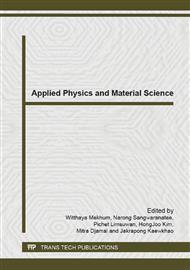p.102
p.107
p.111
p.115
p.119
p.124
p.128
p.132
p.135
Experimental and Modeling Studies on Thermal Conductivity of Cement Composites Containing Nanosilica
Abstract:
This research article was presented the thermal conductivity of cement pastes containing nanosilica. The effects of nanosilica particle size and concentration determined by mixing three nanosilica particle sizes of 12, 50 and 150 nm, using nanosilica were of 1-5 wt%. The water to binder ratio of 0.5 was used. The thermal properties test were subsequently measured in terms of thermal conductivity coefficient using ISOMET 2114. The thermal conductivities of cement paste is thus numerically calculated and the predictions are compared with the existing experimental data. A unifying equation for four fundamental effective thermal conductivity structural models (Series, Parallel, one-dimensional heat flow, Maxwell’s model) was derived. The best prediction was provided by a composite model that combined the Maxwell’s model. Consequently, applications of nanosilica cement paste in building constructions may be an interesting solution in order to improve sustainability and building energy efficiency.
Info:
Periodical:
Pages:
119-123
Citation:
Online since:
June 2014
Authors:
Keywords:
Price:
Сopyright:
© 2014 Trans Tech Publications Ltd. All Rights Reserved
Share:
Citation:


